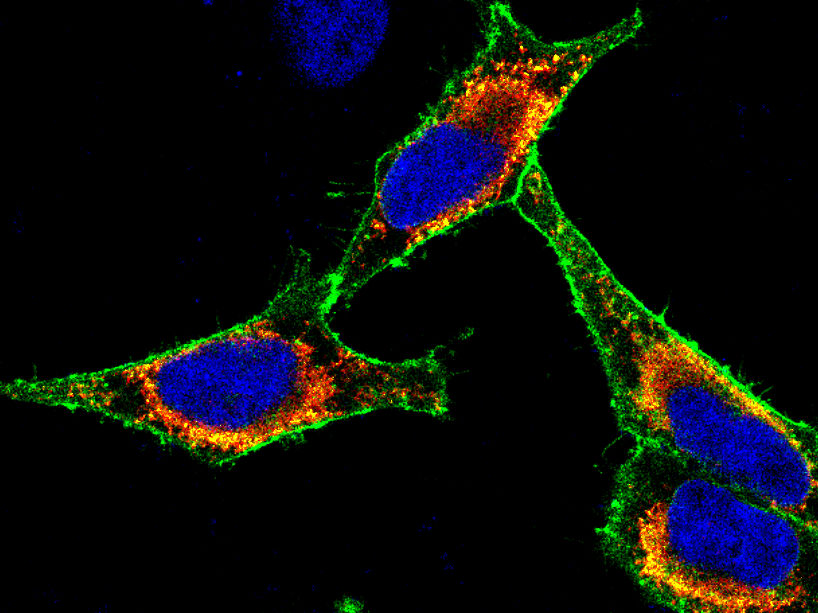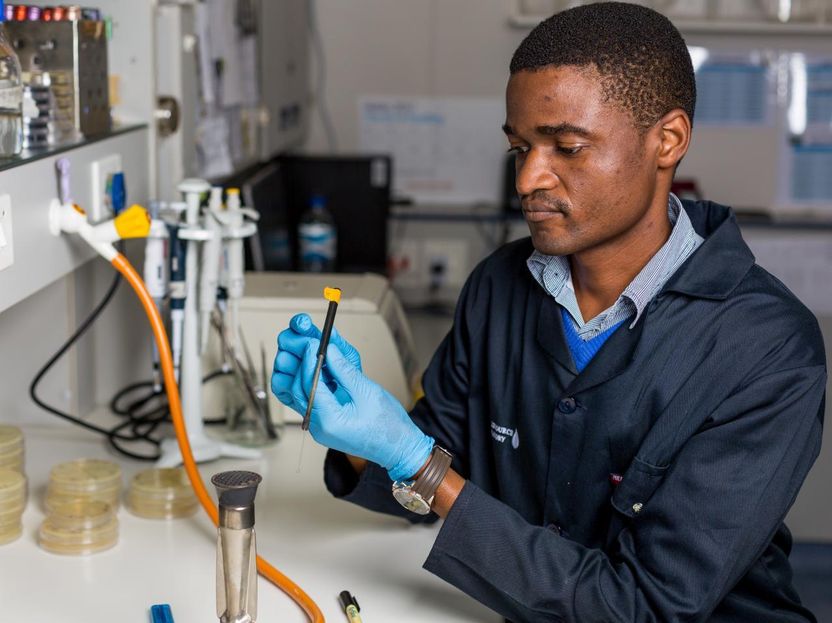USC scientists turn a harmful greenhouse gas into a tool for making pharmaceuticals
New technique finds a use for ozone-destroying chemical waste product
A team of chemists at USC has developed a way to transform a hitherto useless ozone-destroying greenhouse gas that is the byproduct of Teflon manufacture and transform it into reagents for producing pharmaceuticals. The team will publish their discovery in Science. The method is also being patented.
Because of the popularity of Teflon, which is used on everything from cooking pans to armor-piercing bullets, there's no shortage of its waste byproduct, fluoroform. Major chemical companies such as DuPont, Arkema and others have huge tanks of it, unable to simply release it because of the potential damage to the environment. Fluoroform has an estimated global warming potential 11,700 times higher than carbon dioxide.
G.K. Surya Prakash, a professor of chemistry at the USC Dornsife College of Letters, Arts and Sciences and director of the USC Loker Hydrocarbon Research Institute, describes fluorine as "the kingpin of drug discovery." About 20 to 25 percent of drugs on the market today contain at least one fluorine atom.
Fluorine can be found in all different kinds of drugs, everything from 5-Fluorouracil (a widely used cancer treatment discovered by Charles Heidelberger at USC in the '70s) to Prozac to Celebrex.
"It's a small atom with a big ego," he said, referring to the fact that while fluorine is about the same size as a tiny hydrogen atom—so similar that living cells cannot tell the two elements apart—it is also extremely electronegative making carbon-fluorine chemical bond quite strong, which improves the bioavailability of drugs made with fluorine.
The discovery was the product of many years of trial-and-error tests, hard work that the postdocs performed under Prakash's direction. Eventually, the team pinned down the precise conditions needed to coax the harmful fluoroform (CF3H) into useful reagents, including the silicon-based Ruppert-Prakash Reagent for efficient CF3 transfer. Fluoroform with elemental sulfur was also converted to trifluoromethanesulfonic acid, a widely used superacid one-hundred times stronger than sulfuric acid.
Most read news
Organizations
Other news from the department science

Get the life science industry in your inbox
By submitting this form you agree that LUMITOS AG will send you the newsletter(s) selected above by email. Your data will not be passed on to third parties. Your data will be stored and processed in accordance with our data protection regulations. LUMITOS may contact you by email for the purpose of advertising or market and opinion surveys. You can revoke your consent at any time without giving reasons to LUMITOS AG, Ernst-Augustin-Str. 2, 12489 Berlin, Germany or by e-mail at revoke@lumitos.com with effect for the future. In addition, each email contains a link to unsubscribe from the corresponding newsletter.
Most read news
More news from our other portals
Last viewed contents
Ariadne Expands Presence in South-East Asia - Genomax Technologies to Distribute Ariadne Software in the Region
All genes in 1 go
Europe challenges USA in stem cell research

Medication-based starvation of cancer cells - Findings on cancer medication reveal protein regulation mechanism
Evotec reaches milestone in integrated drug discovery and development partnership with Aeovian





















































